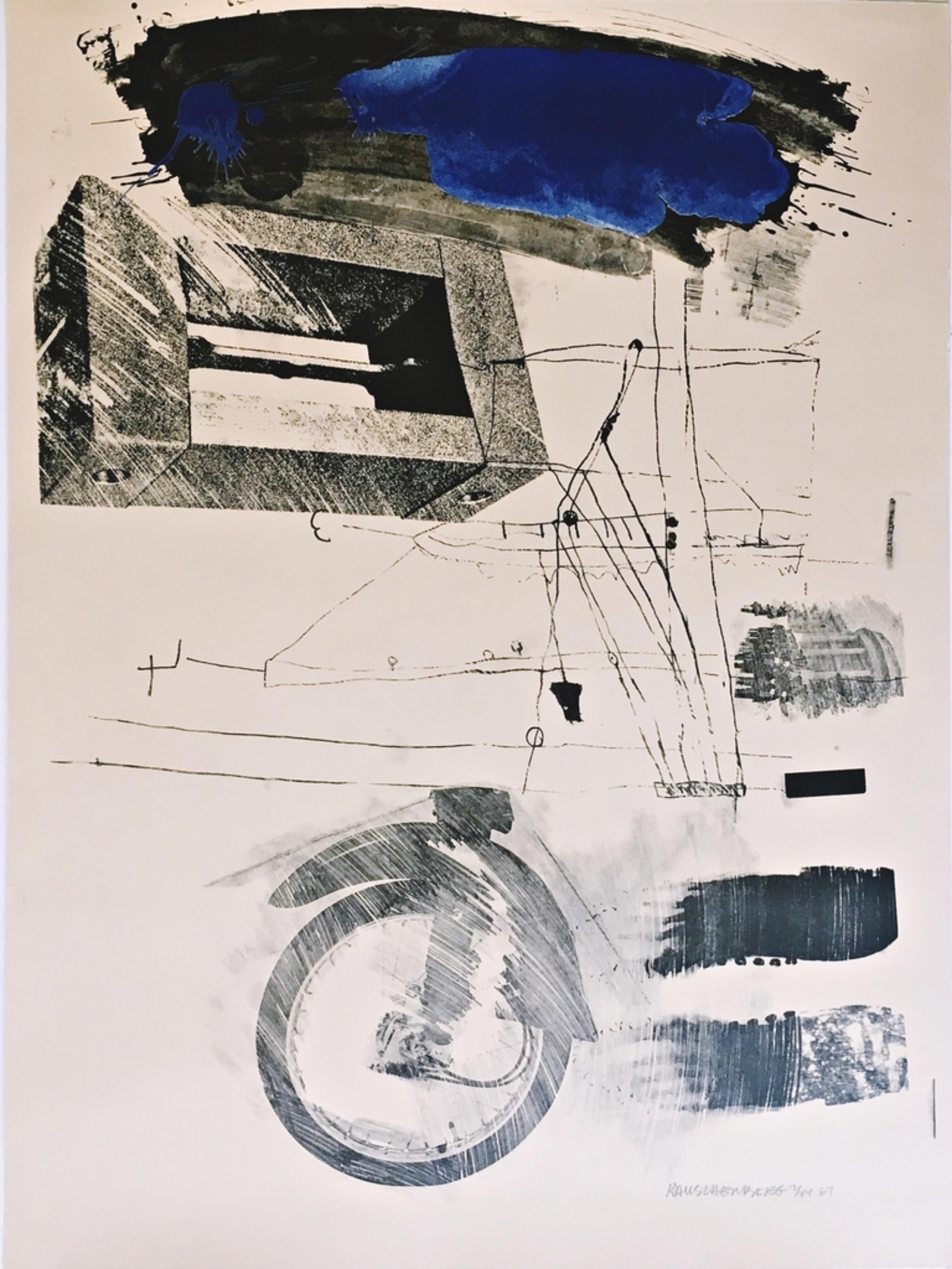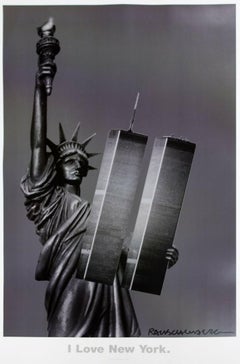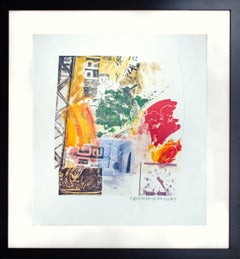Questions & Answers
Our trusted network of 1stDibs sellers answer common questions
What was unique about Robert Rauschenberg's art?
1 Answer

What was unique about Robert Rauschenberg's art was that it incorporated everyday objects and straddled the line between painting and sculpture. The American artist is best known for the complex assemblages of found objects he termed “combines.” Rauschenberg was drawn to the visual landscape of popular culture and mined its imagery for inspiration. Early in his career during the 1950s, he used unorthodox materials like house paint and tried novel techniques in his studio, like running paper over with a car after inking its wheels. In the 1960s, Rauschenberg turned his attention to silkscreening, creating prints that feature iconic figures of the day, very much in line with the style and content of Pop art. One such work, 1965's CORE, which was created to commemorate the Congress of Racial Equality, combines photographs of President Kennedy, an unidentified Native American man and a statue of a Civil War soldier with images of highways, amusement parks, street signs and other features of the built environment. Throughout the 1960s and ’70s, Rauschenberg experimented with printing on unusual materials, such as Plexiglas, clothing and aluminum. Shop a range of Robert Rauschenberg art on 1stDibs.
1stDibs ExpertAugust 8, 2024
Related Questions
- What art movement is Robert Rauschenberg?1 Answer
- What was Robert Rauschenberg famous for?1 Answer
- What were the non-traditional artworks of Robert Rauschenberg called?1 Answer
- What is unique about Salvador Dalí art?1 Answer
- What makes KAWS’s art unique?1 Answer
Shop for Robert Rauschenberg Art on 1stDibs
I Love New York, Lt Ed print Statue of Liberty, Lt. Ed of 300 offset lithograph
By Robert Rauschenberg
Located in New York, NY
Robert Rauschenberg
I Love New York, 2001 (LARGE)
Plate signed on the front
Offset lithograph on high quality wove paper
39.25" x 25 inches
(This ships rolled in a tube measuring 37...
Category
Early 2000s Pop Art Figurative Prints
Materials
Lithograph, Offset
Statue of Liberty, Conceptual Art Screenprint by Robert Rauschenberg
By Robert Rauschenberg
Located in Long Island City, NY
This print by Robert Rauschenberg is part of an 8-piece portfolio published by The New York Graphic Society in 1983 and includes works from Red Grooms, Robert Indiana, Alex Katz, R.B...
Category
1980s Conceptual Abstract Prints
Materials
Screen
Robert Rauschenberg Signed Lithograph
By Robert Rauschenberg
Located in New York, NY
Robert Rauschenberg
American (1925-2008)
Untitled, for ROCI
offset color lithograph, signed and dated lower right "Rauschenberg 84"
25 3/4 x 22 3/4 in. (sheet)
Framed: 31 1/4 x 29 x...
Category
1980s Post-Modern Figurative Prints
Materials
Lithograph
Quarry, Pop Art Offset Lithograph by Robert Rauschenberg
By Robert Rauschenberg
Located in Long Island City, NY
Robert Rauschenberg, American (1925 - 2008) - Quarry, Year: 1968, Medium: Offset Lithograph, Image Size: 33 x 25 inches, Size: 34.5 x 26 in. (87.63 x 66.04 cm), Printer/Publisher...
Category
1960s Pop Art Figurative Prints
Materials
Offset
Rare 1960s Musee D'Art Moderne de la ville de Paris Limited Edition offset print
By Robert Rauschenberg
Located in New York, NY
Robert Rauschenberg
Rare 1960s Musee D'Art Moderne de la ville de Paris poster, 1968
Offset Lithograph
Edition of 500
27 1/2 × 21 inches
Unframed, not signed
Accompanied by Certifica...
Category
1960s Pop Art Figurative Prints
Materials
Lithograph, Offset
Robert Rauschenberg 'Night Shades + Urban Bourbons' 1995
By Robert Rauschenberg
Located in Brooklyn, NY
This exhibition poster commemorates Robert Rauschenberg's "Night Shades + Urban Bourbons" showcase, held in Denmark in 1995. Known for his groundbreaking work in mixed media and coll...
Category
20th Century Pop Art Prints and Multiples
Materials
Offset
$120 Sale Price
20% Off


